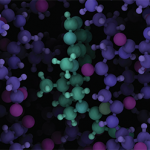Syk Inhibitors
A member of the family of tyrosine kinases, Syk is expressed in B cells, mast cells, neutrophils, macrophages, synoviocytes, and T cells. Like JAKs, Syk is very high in the signaling cascade. Syk also interacts with receptors and turns on secondary messengers that alter gene transcription.
In an animal model of RA (i.e., collagen-induced arthritis), fostamatinib inhibited Syk and resulted in a “dose-dependent improvement in disease severity,” Dr. Firestein said. Benefit was also seen in a passive model of arthritis, which was “suggestive that a molecule like this might be beneficial in RA,” he added. In a trial of RA patients who did not adequately respond on methotrexate, an oral Syk inhibitor (fostamatinib) was significantly superior to placebo with respect to ACR50 and ACR70 at doses of 100 mg twice daily and 150 mg once daily.3 Adverse events included hypertension, diarrhea, and neutropenia.
Fostamatinib is a Syk inhibitor, but it blocks many other kinases, Dr. Firestein said. “We know that it is effective but we don’t know for certain whether Syk is the one that’s responsible for clinical benefit, or for the side effects,” he added.
Evolving Science
The science is still out on kinase inhibitors in terms of the risk–benefit ratio. “There’s no such thing as a free lunch,” Dr. Firestein said. “Sometimes [toxicities] are mechanism based and are therefore unavoidable, but sometimes they are due to off-target effects and can be improved by better drug design.” Toxicity is often involved with host defense, and is often dose limiting.
“In our diseases, we are used to managing toxicity,” Dr. Firestein said of rheumatologists. “Almost all molecules we use have some toxicity, and we manage it. Toxicity can be managed, but a lack of efficacy cannot. We have to be flexible on a pristine safety profile for severe diseases like RA and lupus in order to effectively treat them.”
There’s a long way to go, Dr. Firestein said, and there are many kinase inhibitors currently under investigation. Rheumatologists will be seeing these molecules and many more over the next decade.
Kimberly J. Retzlaff is a medical journalist based in Denver.
References
- Sweeney SE, Firestein GS. Primer: Signal transduction in rheumatic disease—a clinician’s guide. Nat Clin Pract Rheumatol. 2007;3:651-660.
- Kremer JM, Bloom BJ, Breedveld FC, et al. The safety and efficacy of a JAK inhibitor in patients with active rheumatoid arthritis: Results of a double-blind, placebo-controlled phase IIa trial of three dosage levels of CP-690,550 versus placebo. Arthritis Rheum. 2009;60:1895-1905.
- Weinblatt ME, Kavanaugh A, Genovese MC, Musser TK, Grossbard EB, Magilavy DB. An oral spleen tyrosine kinase (Syk) inhibitor for rheumatoid arthritis. N Engl J Med. 2010;363:1303-1312.
